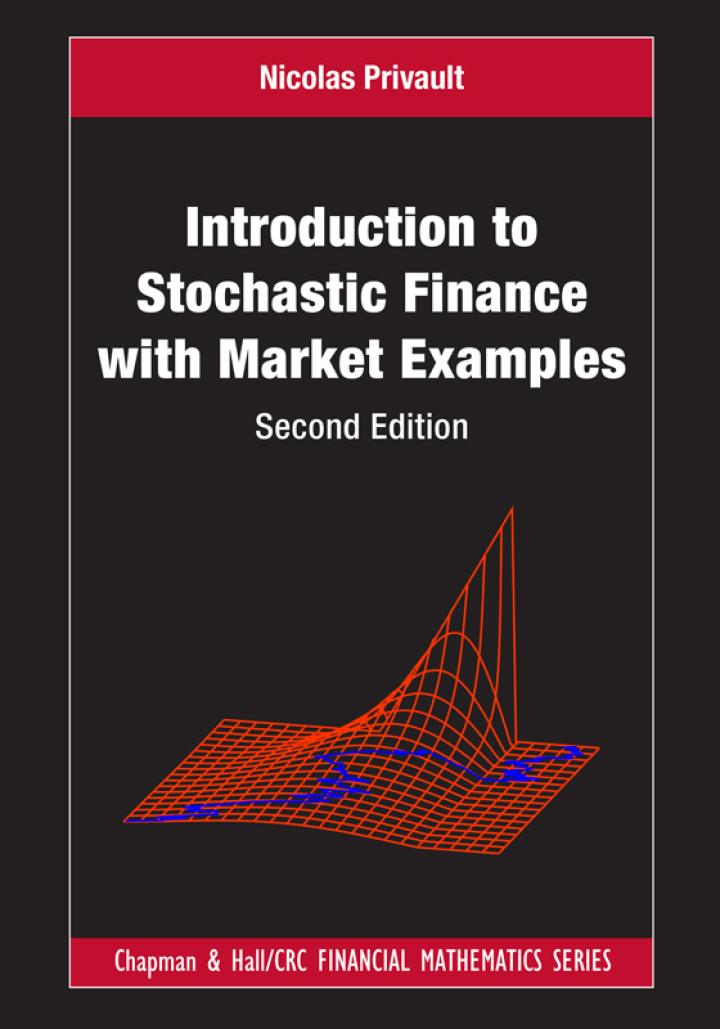Cox-Ingersoll-Ross (CIR) model. Consider the equation [ begin{equation*} d r_{t}=left(alpha-beta r_{t}ight) d t+sigma sqrt{r_{t}} d B_{t} tag{4.45}
Question:
Cox-Ingersoll-Ross (CIR) model. Consider the equation
\[
\begin{equation*}
d r_{t}=\left(\alpha-\beta r_{t}ight) d t+\sigma \sqrt{r_{t}} d B_{t} \tag{4.45}
\end{equation*}
\]
modeling the variations of a short-term interest rate process \(r_{t}\), where \(\alpha, \beta, \sigma\) and \(r_{0}\) are positive parameters and \(\left(B_{t}ight)_{t \in \mathbb{R}_{+}}\)is a standard Brownian motion.
a) Write down the equation (4.45) in integral form.
b) Let \(u(t)=\mathbb{E}\left[r_{t}ight]\). Show, using the integral form of (4.45), that \(u(t)\) satisfies the differential equation
\[
u^{\prime}(t)=\alpha-\beta u(t),
\]
and compute \(\mathbb{E}\left[r_{t}ight]\) for all \(t \geqslant 0\).
c) By an application of Itô's formula to \(r_{t}^{2}\), show that
\[
\begin{equation*}
d r_{t}^{2}=r_{t}\left(2 \alpha+\sigma^{2}-2 \beta r_{t}ight) d t+2 \sigma r_{t}^{3 / 2} d B_{t} \tag{4.46}
\end{equation*}
\]
d) Using the integral form of (4.46), find a differential equation satisfied by \(v(t):=\mathbb{E}\left[r_{t}^{2}ight]\) and compute \(\mathbb{E}\left[r_{t}^{2}ight]\) for all \(t \geqslant 0\).
e) Show that
\[
\operatorname{Var}\left[r_{t}ight]=r_{0} \frac{\sigma^{2}}{\beta}\left(\mathrm{e}^{-\beta t}-\mathrm{e}^{-2 \beta t}ight)+\frac{\alpha \sigma^{2}}{2 \beta^{2}}\left(1-\mathrm{e}^{-\beta t}ight)^{2}, \quad t \geqslant 0
\]
Step by Step Answer:

Introduction To Stochastic Finance With Market Examples
ISBN: 9781032288277
2nd Edition
Authors: Nicolas Privault





